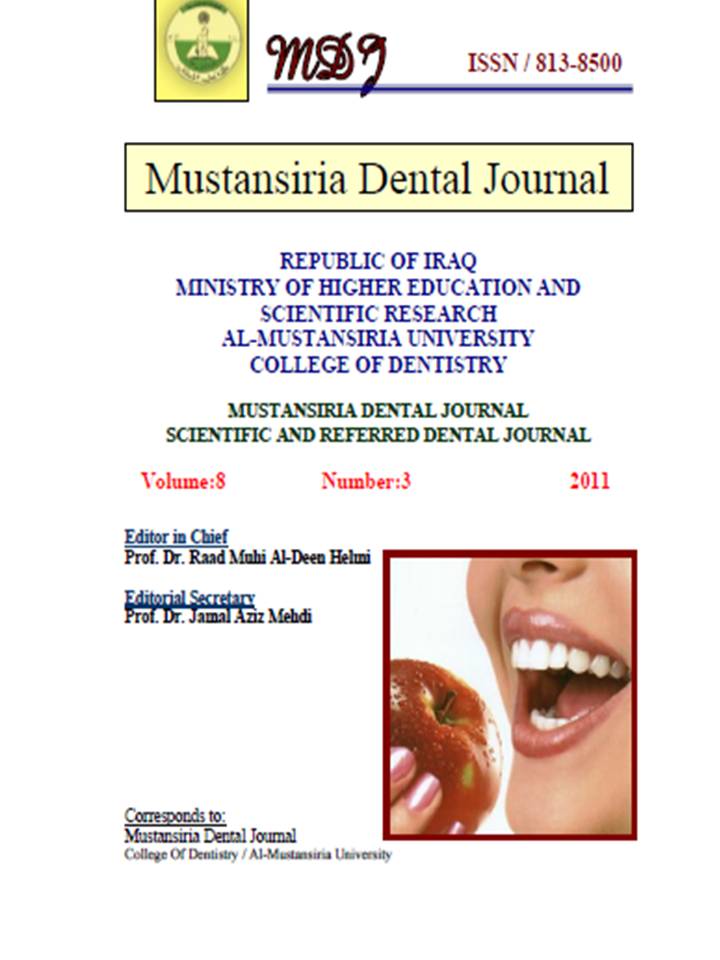Burning Mouth Syndrome in an Iraqi Sample of Patients: a preliminary study of 52 Cases
DOI:
https://doi.org/10.32828/mdj.v8i3.355Keywords:
Key words: BMS = burning mouth syndrome, Lcu = Life change unit, HIV = human immunodeficiency virus, VAS = visual analogue scale, PBI = protein bound iodine, T3=Triiodothyronine, MRI = magnetic resonance imaging.Abstract
Evaluation of the clinical characteristics of burning mouth syndrome in a sample
of Iraqi patients referred to a large teaching dental clinic in Baghdad.
Fifty two patients with burning mouth syndrome were followed up through a
prospective study ,investigating the clinical characteristics of using pre- established
criteria’s and tests for each feature .
Forty four women and 8 men with burning mouth syndrome ranging in age from
46 – 72 years. Their cause of attendance was disturbed sleep (46.1%), fear of serious
disease (44.2%) and anxiety (36.5%). The pain duration since it started ranged from
3 – 48 months (Mean 18.17 ± 12.78) months.
Twenty six patients (50%) reported precipitating event and 32 (61.9%) reported a
change in taste sensation of which (56.25%) had a bitter taste. VAS pain levels were
(6.13±0.02 for females and 6± 0.91for males). 25%of the patients had medical
comorbidities that were under control.
The location of pain was mostly on the tongue (76.9%) and mainly on its margins
(57.7%) unilaterally. And only 25% of the patients had subjective xerostomia with
stimulated parotid salivary flow rate less than 0.5 ml/ min.
Estradiol levels among females were (68.18%) below 15 pg/ml and (31.72%)
above that in spite of 75% of them were post–menopause. And these patients were
subject to stress ranging from 35-146 (L. c. u's) with a mean of 2.73 ± 1.28 events per
patient and about 7.69% of them had one severe stress accident .
The classification of psychiatric comorbidities occurring among the patients
sample were (17.3% = free), (40.38% = Depressive neurosis) and (20.08% = Anxiety
neurosis) and none of the patients reached the level of psychosis.
Burning mouth syndrome is possibly of high prevalence and with high range of
etiologies that should be more investigated including its relation with psychological
stress and neurosis.

Downloads
Published
Issue
Section
License
The Journal of Mustansiria Dental Journal is an open-access journal that all contents are free of charge. Articles of this journal are licensed under the terms of the Creative Commons Attribution International Public License CC-BY 4.0 (https://creativecommons.org/licenses/by/4.0/legalcode) that licensees are unrestrictly allowed to search, download, share, distribute, print, or link to the full texts of the articles, crawl them for indexing and reproduce any medium of the articles provided that they give the author(s) proper credits (citation). The journal allows the author(s) to retain the copyright of their published article.
Creative Commons-Attribution (BY)








